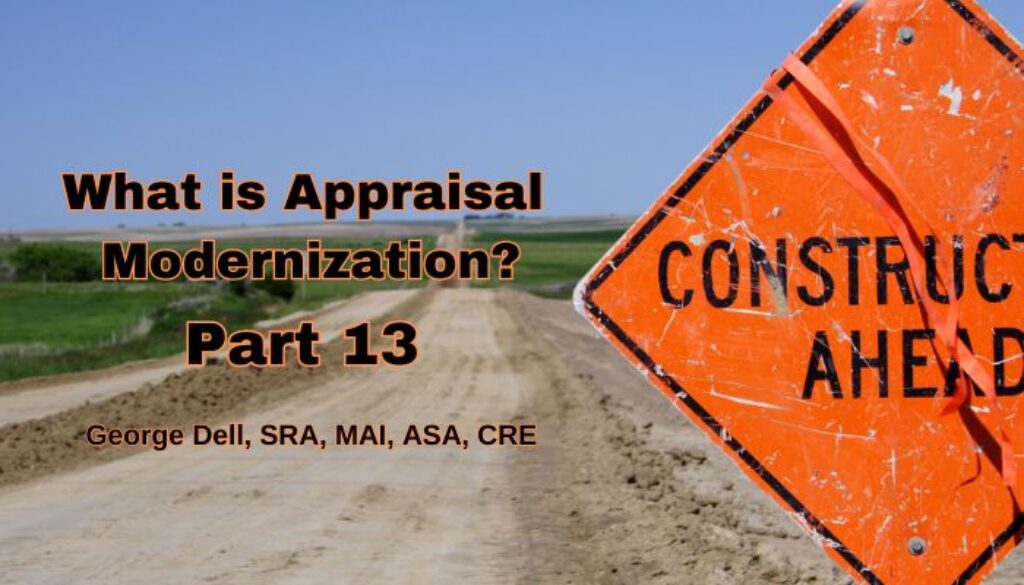The word “modernization” has a meaning different from what I thought.
It seems to depend on who is using the word. To me, it just meant “get with it!” To our GSEs (Fannie Mae and Freddie Mac), it means something special.
The dictionary definitions and explanations focus on the social and even political aspects of world order! Like “from a traditional to a modern society, often involving industrialization and urbanization.”
The word “modern” is defined as “designed and made using the most recent ideas and methods: modern technology/architecture/medicine/art.”
Then I googled “Fannie Mae modernize.” The resulting colorful splash page says: “delivering effective, efficient, and impartial home valuations across America.” Sweeping. Then the description of “The modern valuation spectrum.”
The five types of valuations shown are:
- Value acceptance (appraisal waiver);
- Value acceptance + property data;
- Hybrid (third party inspection);
- Desktop (no property inspection);
- Traditional (Appraiser inspects and analyzes).
And Freddie Mac says: “Appraisal modernization represents Freddie Mac’s independent research, assessment and planning for improving collateral valuations.”
It appears “modernization” for our GSE’s changes who does the work, not how it is done. A “spectrum.” not how appraisal can be technically improved.
The GSE’s outlook on modern things comes from an administrative/management orientation. The focus is on process and the lender’s selection of desired risk and reliability. It seems to stray far from the definition of what is an appraisal. Two of the five valuation types are not an appraisal. Not in the established meaning as a valuation completed by a licensed appraiser under USPAP. Two others are fully non-compliant with USPAP requirements.
No standards required. The lender makes the choice!
The “spectrum” and “planning” means lenders pre-estimate collateral risk, then select one of the five choices above. The motive is speed and lower appraisal/AMC fees, but that approach increases collateral uncertainty by the additional subjectivity of the lender decision of the scope of work.
But what about actual appraisal improvement? Let’s look at the appraisal/valuation process.
The valuation and reliability/risk function comprises four parts:
- The subject market–segment delineation;
- The competitive market-segment data selection;
- The application of one of the three basic predictive algorithms;
- The appropriate presentation and interpretation of the value and risk analysis.
Technical modernization (valuation accuracy, precision, and usefulness) can improve both administrative procedures and public policy objectives.
The data is available, computation is here, brain-machine connects/visuals are instantaneous.
The GSE’s revisions move us in the right direction, but neglect how the valuation algorithm itself can be dramatically improved. This requires a blend of asset econometrics, data science, and visuals.
It leaves out simple, localized near term forecasting of value. And it fully ignores the “right-tail” “black-swan” macroeconomic risk that seems to happen regularly every 12 to 15 years.
This known, but ignored, loss regularly visits us, our regulators, and our legislators. Part of the solution is best enhanced by appraiser/expert systems, training, AI, and dashboard design.
The brain/machine/AI revolution is upon us. It needs to be a priority.
Modernization is not who done it! — but how do it!

February 21, 2024 @ 8:30 am
Spot on George! I see modernization as a multi-phase process. Phase I is getting the factual information on the property reliable and accurate, we have been too slow on that front on creating consistent and reliable collection processes. Phase 2, which has had little discussion with exception to your work, will have to do with getting the process and application of methodologies reproducible, reliable and accurate.